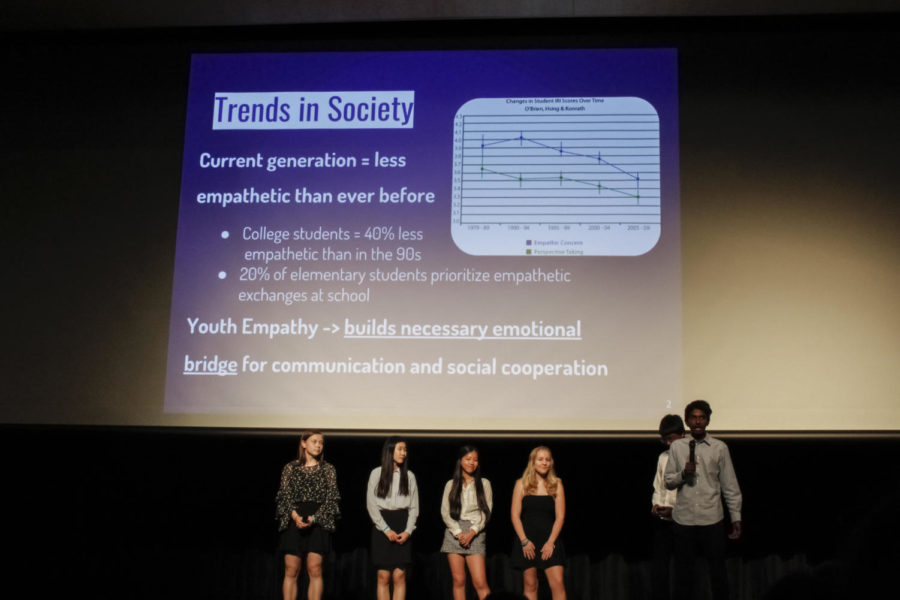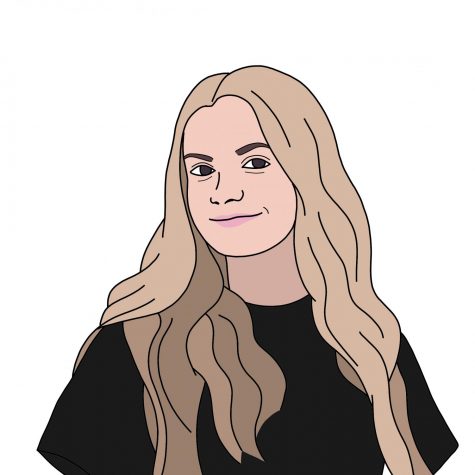Changing the Community with Empathy Exemplars
Freshmen Abby Hopper, Ariana Wu, Akshay Raj, Faith DeNeve, Jane Kim and Satvik Chennareddy presented their project “Higher Empathy for Youth” to students and panelists in the audience.
Select empathy project groups presented to audience members and panelists in the theater on April 28. Their projects were in support of fixing a problem they see in society. Some pitched ideas were Higher Empathy for Youth (H.E.Y.), Scanning for Happiness, Hope for the Homeless and Stress in Youth.
“I just hope that the students that go to watch the empathy project groups have their eyes opened by them and realize that you guys are growing up in a place where you’re very privileged, and there are a lot of people who don’t have as much as you do and that since you have privilege, you guys have to use that privilege to better other people’s lives,” literary and language arts long-term substitute teacher Ashley Steiner said.
The point of having an empathy project is to unite the Portola community and to cause a positive change. However, some students have noticed problems that they face every day as an inspiration for their assignment. One of the groups, Scanning for Happiness, plans to help students decrease the amount of stress they feel each day.
“We were thinking about problems that we face a lot, and that’s mainly stress, and stress often leads to depression as well,” freshman Hiba Mughal said.
Another group called Project Sunshine decided to promote positivity around campus by creating uplifting fundraisers at school such as the “Give a Cookie, Pass a Cookie” movement. In this fundraiser, a student receives two cookies, one for himself or herself and one to give to somebody else. The point of this is to make somebody’s day brighter.
“We’re hosting events like appreciating teachers and giving them gift baskets and then appreciating students by having other students nominate them for prizes and awards so that we can really make Portola a family,” freshman Raksha Rajeshmohan said.
These presentations were viewed by a panel of teachers giving their suggestions to students. The projects were advertised in a presentation form, lasting about ten minutes for each group. After their proposals, students got advice from panelists. Many classes went to watch these project proposals while watching their teachers critiquing the proposals and offering helpful guidance for improvement.
Your donation will support the student journalists of Portola High School. Your contribution will allow us to purchase equipment and cover our annual website hosting costs.





